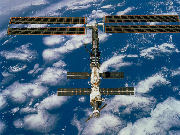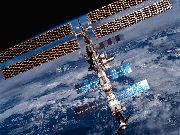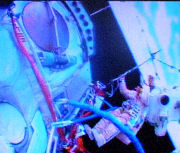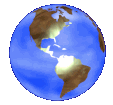








|
International
Space Station
The International Space Station (ISS) launched in 1998. The
ISS programme is a joint project among five participating space
agencies: NASA, Roscosmos, JAXA, ESA, and CSA.The ISS
consists of pressurised modules, external trusses, solar arrays and
other components. The station is divided into two sections,
the Russian Orbital
Segment and the United States Orbital Segment, which is
shared by many nations. ISS components have been launched
by American Space Shuttles as well as Russian Proton and Soyuz rockets.
The station is serviced by a variety of visiting spacecraft, and it has
been visited by astronauts and cosmonauts from 15 different nations.
The
ISS serves as a microgravity and space environment research
laboratory in which crew members conduct experiments in biology, human
biology, physics, astronomy, meteorology, life, sciences,
physical sciences,
materials science, and space
weather. The Station simplifies individual
experiments by eliminating the
need for separate rocket launches and research staff.
After the Space Shuttle program ended in 2011, Soyuz rockets became the
only provider of transport for astronauts at the International Space
Station, while Dragon (commercially-built and operated
spacecraft) became the only provider of bulk
cargo-return-to-Earth services (downmass capability of Soyuz capsules
is very limited).
The ISS maintains an orbit with an altitude of between 330
km and 435
km by means of reboost manoeuvres using the engines of the Zvezda
module or visiting spacecraft. It completes 15.53 orbits per day. As of
January 2014, the US-portion of the ISS was funded until 2024, and may
operate until 2028. The Russian ISS program head, Alexey
B.
Krasnov, said in July 2014 that "the Ukraine crisis is why Roscosmos has received no government
approval to continue the station partnership beyond 2020."
The SGF Co. Ltd. participated in the onboard software development for
the Plasma Wave Complex (PWC) and developed its EGSE. PWC
measures the interaction with space plasma, charges and noise of active
experiments influence to investigate these problems.
26.
December
2014
|


International Space Station on orbit

Mounting PWC's one sensor on
the ISS's body
|


